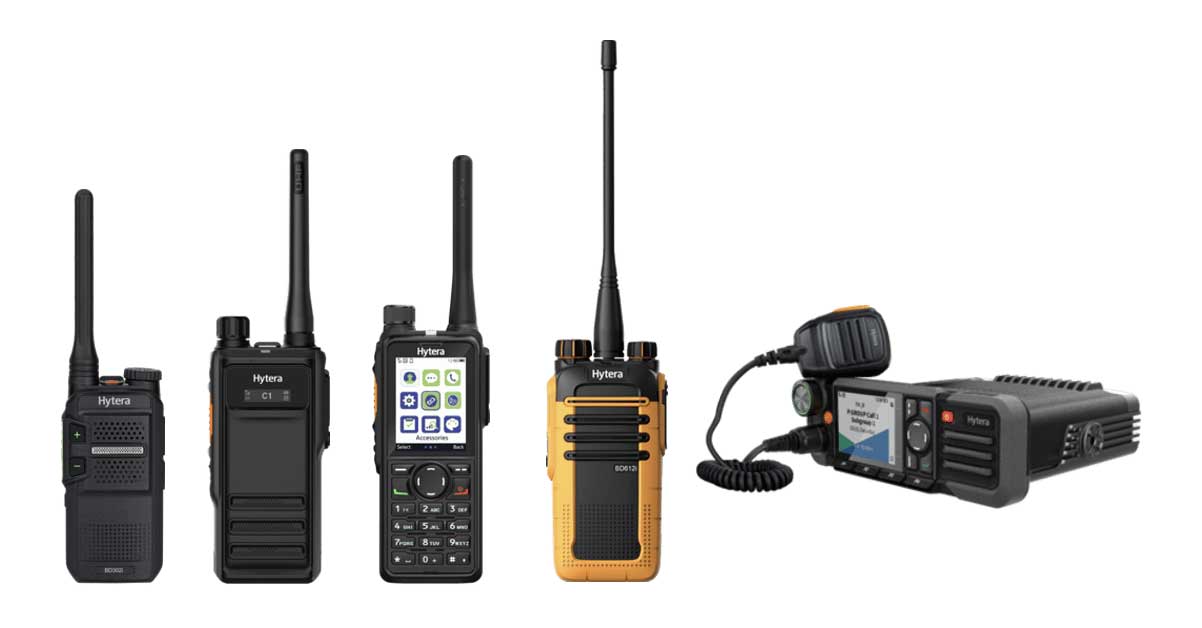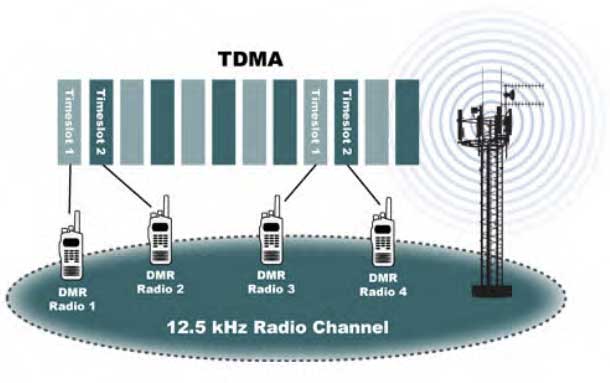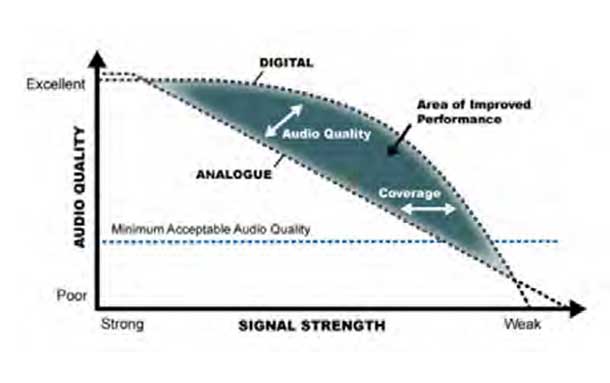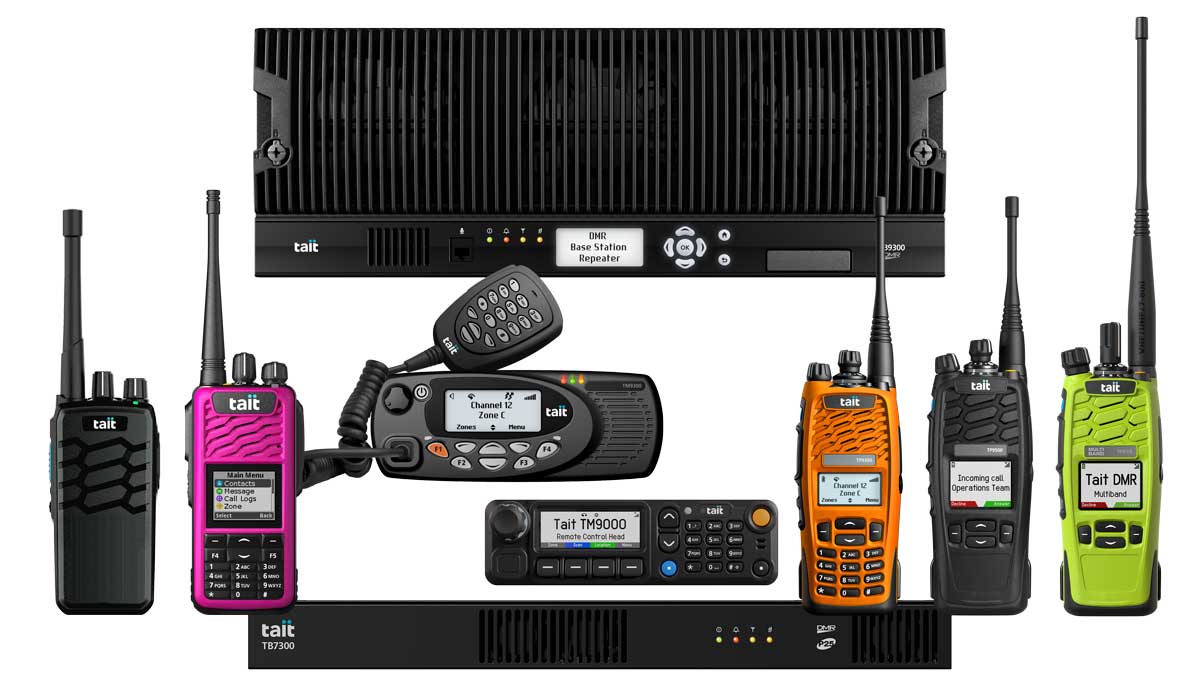Benefits of DMR (Digital Two-Way Radio)
Digital two-way radio technology has transformed communication across various industries and organizations. Unlike traditional analog radios, digital two-way radios offer many benefits, including superior audio quality, longer battery life, enhanced security, and efficient data transmission. These benefits make digital radios essential for seamless and reliable communication in today’s fast-paced world.
The shift from analog to digital is changing professional mobile communications. Digital technologies provide advantages that analog systems cannot match, enabling smooth communication, instant responses, and efficient operations with superior performance and versatile applications.
DMR Digital Capabilities
DMR digital capabilities improve radio communications and provide several advantages over legacy analog radio systems:
- Instant Push-to-Talk: Individual and group calling with radio identification.
- Double the Capacity: Doubles the capacity of existing licensed radio channels.
- Efficient Infrastructure Use: Provides efficient use of infrastructure equipment.
- Power Efficiency: Enables power efficiency for longer battery life.
- Superior Audio: Superior audio performance over longer distances.
- Data Transmission: Supports data transmission for digital applications.
Advanced Digital Technology
Double the Call Capacity
TDMA technology doubles the number of users that can access a radio frequency. In contrast to analog systems, which can only allow one user at a time to communicate on a channel, TDMA technology can support two users per channel. This capability results in a more efficient use of radio spectrum, which is a finite resource.
Superior Voice Quality
Unlike analog systems that are susceptible to interference and background noise, TDMA provides clear and crisp audio quality, even in noisy environments.
Longer Battery Life
TDMA transmits information in short bursts, which conserves the radio’s battery power, resulting in longer battery life. By cutting the effective transmit time in half, two-slot TDMA can enable up to 40 percent improvement in talk time in comparison with analog radios. This feature is particularly useful in environments where a radio user may be away from a power source for an extended period, such as in remote areas or during extended shifts.
Longer Range and Coverage
TDMA 12.5 MHz channel spacing allows for better frequency reuse, which increases the coverage area of the radio system. This capability is particularly useful in large-scale operations, such as transportation and education.
DMR Audio Quality
Digital two-way radios provide excellent audio quality, which is essential for clear and effective communication. Unlike analog radios, digital radios support advanced noise-canceling features that provide clear and crisp sound that makes it easier to communicate even in noisy environments. DMR digital technology reduces noise and preserves voice quality over a greater range than analog radios, especially at the farthest edges of the transmission range.
One of the reasons that DMR has an excellent range performance is the Forward Error Correction (FEC) and Cyclic Redundancy Check (CRC) coders specified in the DMR standard. These coders enable receiving radios to detect and correct transmission errors by analyzing bits inserted into messages that allow the receiving radio to tell if there is an error. Using coders and other techniques, digital processing can screen out noise and reconstruct signals from degraded transmissions. The result is an increase in the radio system’s effective range where users can hear everything being said more clearly over longer distances.
Migrating from Analog to Digital DMR Radios
Migrating from analog to digital two-way radios offers numerous benefits, including superior audio quality, increased call capacity, better coverage, longer battery life, enhanced privacy and security, and advanced features like GPS and text messaging. Hytera digital radios are among the best on the market, offering versatility, durability, interoperability, and advanced features that enhance communication and increase efficiency. Investing in digital two-way radios is a smart decision for any business or organization that relies on clear and reliable communication.
DMR solutions are designed to meet the needs of mission-critical users, providing reliable, efficient, and secure communications. With flexible migration options, robust hardware, and support for smart data applications, DMR ensures that your organization can operate efficiently and safely, now and in the future.
DMR Tier 2: Exceptional Critical Communications
The DMR Tier 2 conventional solution brings exceptional critical communications capability to your organization. Our offering provides more coverage and capacity, a lower total cost of operation, as well as a seamless evolution path to DMR Tier 3 trunking when your operations expand.
Key Features
- Cost-Effective Infrastructure: DMR Tier 2 solution enables you to deploy cost-effective infrastructure that meets your changing operational needs both now and in the future, while ensuring consistent coverage for your users.
- Flexible Migration Path: Analog to digital, and DMR Tier 2 conventional to Tier 3 trunked migration are all possible. Start with terminals in analog mode and upgrade to digital DMR Tier 2 when you’re ready to double your capacity.
- Seamless Upgrades: Upgrade from the analog to the base station/repeater without changing the power amplifier, PMU, or rack configuration—just update the reciter and chassis. Expand to DMR Tier 3 trunking for advanced voice and data routing capabilities with a straightforward upgrade path.
DMR Tier 3 is a digital communications platform that delivers workforce efficiencies and operational benefits for mission-critical users. DMR Tier 3 gives you a powerful combination of flexibility, control, and resiliency. Developed in conjunction with the open standards defined by the DMR Association, DMR products ensure interoperability with other DMR equipment and opportunities for multi-vendor solutions with standardized interfaces.
Key Benefits of DMR Tier 3
- Smart Data Applications: Supports SCADA data transmission and location services.
- Tough Hardware: Built to withstand harsh environments.
- Resilient Infrastructure: Ensures reliable communication in critical situations.
- Secure Communications: Protects sensitive information.
- Lower Total Cost of Ownership: Cost-effective solutions for long-term use.
- Increased Efficiency and Productivity: Enhances operational workflows.
- Improved Worker Safety: Provides features that ensure the safety of your workforce.
- Flexible Migration Options: Smooth transition from existing systems.
Upgrading a radio network can be disruptive, leading operators to keep existing networks in service beyond their viable lifespan. However, technological and regulatory changes will eventually necessitate a move to digital. When that time comes, it is crucial to choose a solution engineered for a smooth and seamless migration—ensuring your critical communications are uninterrupted.
Simplest Path to Narrowbanding
- Multi-Mode Terminals & Base Stations: Support both analog and digital modes.
- Analog-Equivalent Coverage: Reuses existing towers for coverage.
- Support for Legacy Equipment Interfaces: Ensures compatibility with existing systems.
- Lower Capital Costs: Cost-effective upgrades.
- Migration Design, Deployment & Support Services: Comprehensive support throughout the migration process.




